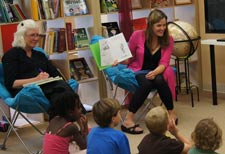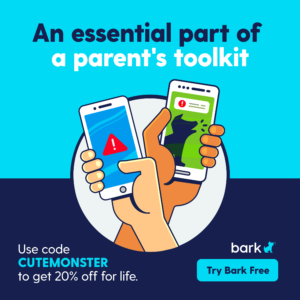
Originally featured in Byrdseed Gifted June 2011 Issue
By and large, we underestimate the learning capabilities of young students, beginning in preschool and extending through second grade. We tend to focus on the basics – alphabet, letters, numbers, individual words, basic shapes – in isolation, forgetting to add the richness of depth and complexity that allow students to learn on a deeper level, and provide interest for those students who have already learned the particular skills. For gifted students even as young as age 3, the type of skill-based learning that prevails in preschool and early elementary classrooms can turn them off from school almost right away.
Frustrations For Young Gifted Children
I know a gifted preschool-aged child who taught himself the alphabet before age one, and independently learned to read by age three. Now, at four and a half, he can read at the level of a typical third grader. When he entered his second year of preschool, he started to manifest behavioral problems, such as running out of the classroom.
A closer look at the situation revealed that the class was focusing on basic shapes, colors, and the numerals 1 through 6. This little one had known these skills since he was a year old, so it’s no wonder he wanted to high-tail it out of the classroom back into the wide, world of knowledge and discovery. The preschool classroom stifled him, and almost turned him off to school before the age of four. A change to a more flexible classroom where he had a choice in his learning options solved the problem, and the child flourished.
Based on research and experience, I believe that many so-called behavioral problems are not inherent in the child but result from the child trying to function in a setting that is not right for him or her. Primary classrooms need to allow more flexibility to bright children who have mastered skills, including pre-assessment, center-based work, freedom of choice, and opportunities to delve into a topic on a deep level.
Using Children’s Books
But with so many levels and so much to cover, how can you possibly differentiate for gifted students in the primary classroom? Besides, you don’t want to overwhelm those who might not “get it.”
The best and most effective tools of the teaching trade, in my opinion, are children’s books. I love using literature as a catalyst for activities, ideas, intrigue, and depth in the classroom. Gifted children most often are eager to listen to a story, see the pictures, and then engage in an activity inspired by the text or an idea in the book.
Let me share with you a number of ideas that can aid in your quest for deepening your classroom. Summer is a perfect time to visit the library, browse online, and think about how you can incorporate more literature into your daily lessons to more fully engage your gifted students – and all of your students!
Picture This!
A librarian named Jana Starnes, at an elementary school in Lebanon, Missouri, compiled this comprehensive list entitled Picture This! Using Picture Books to Introduce or Teach Skills. Organized by academic subject and by subtopic, Ms. Starnes lists high-quality children’s books that can help spark your lesson on a particular topic.
It Looked Like Spilt Milk
Today I will share a simple, summer-appropriate lesson idea using the book “It Looked Like Spilt Milk” by Charles G. Shaw. I chose this to show how easy it is to differentiate for young gifted students.
The book can be found in many classrooms, so you may have it already. As a read-aloud, it would probably only be suitable for young preschoolers as it is quite repetitive. But as a catalyst for learning, there are many possibilities!
The book consists of white-on-blue formations with the repetitive refrain, “Sometimes it looked like Spilt Milk, but it wasn’t Spilt Milk.” On each page the white formation changes to look like something else. “Sometimes it looked like a Rabbit. But it wasn’t a Rabbit.” Throughout the book, we see different formations and finally the book ends with, “Sometimes it looked like Spilt Milk. But it wasn’t Spilt Milk. It was just a Cloud in the Sky.”
The Lesson
- Read the story aloud.
- Go outside and hunt for pictures in the clouds. Have the students lie down in a field, or simply sit on the playground, looking up. Write down formations that the students see. Encourage them to add action and description to their formations, pointing to a “tree losing its leaves in the fall” instead of simply “a tree.”
- Use cotton balls to create students’ own “cloud collages”. Consider gluing the collages on a card stock, or just let them play with the cotton balls, creating different formations.
- Create your own class book or bulletin board with their formations and descriptions. Again, encourage action and description in their formations. Please note that for young gifted children the focus should be on process rather than product. They should be allowed flexibility when it comes to product if they are engaged and participatory in the process. They may very much enjoy experimenting with the cotton balls but may resist when asked to actually glue them onto paper. This is OK and there is no rule that there has to be a product. If this is the case, continue on to the science extension!
A Science Extension
Use the above as a catalyst for a unit on the study of clouds. Even young preschoolers would love to have access to such new and interesting scientific knowledge. Introduce your students to the different types of clouds and their characteristics. Make it a game to hunt for the various kinds of clouds, and create a class chart where the children can record the clouds that they have seen.
Extending Language Arts
Rewrite The Book
Ask your older students, probably first grade and up, if the language in the story is interesting, creating vivid, descriptive pictures in your mind? The answer should be no, because the text repeats the same refrain over and over. This is a great jumping off point to have students explore description and work on the concept of “show, don’t tell.” Have your students “rewrite” the book, but creating luscious, rich sentences that make the clouds come alive.
Incorporate The Alphabet
If you are a teacher in a young classroom working on the alphabet, this lesson is a good way to add interest and intrigue for students who already understand the base material. If your goal is to reinforce the alphabet, during your cloud hunt, try as a class to find a cloud formation that represents every letter of the alphabet.
You can write the “found clouds” on a large piece of poster board. Maybe you’d like to extend the process so that your students create their own cloud alphabet books to give them practice writing words. Or, you can create a class book or a bulletin board display with each child creating a cotton ball formation for an assigned letter of the alphabet.
And More…
I could go on and on with more extensions to this simple little book. When planning your own lessons around literature, you can take one of two approaches. You can first think of your content goal, and then find a book to go with it, thinking “I need a way to introduce my unit on weather that excites the students.” Then you would actively search for a book to inspire the topic.
The other approach is to be inspired by a book first. Then think of your teaching goals and figure out a way to use the book that inspired you to inspire your students and support their learning.
About The Author
 Katie Haydon, founder of Ignite Creative Learning Studio, is a teacher, nationally-known writer and speaker, and a mentor to students of all ages. A life-long learner herself, she loves to find the most creative, innovative, hands-on ways to present math, writing, history, and science to kids. She has taught second grade, Spanish, creative writing, and journalism at Monica Ros, Topa Topa, and Valley Oak Charter schools in Ojai,CA, and creative writing at the Center for Gifted in Chicago. Katie is a published author on teaching, parenting, and early foreign language instruction, and her work was recently featured in Igniting Creativity in Gifted Learners, K-6, edited by Joan Franklin Smutny. A graduate of Northwestern University, Katie majored in Spanish and Latin American language, literature, and culture, and minored in economics. She serves on the Torrance Legacy Creative Writing Awards committee for the National Association for Gifted Children.
Katie Haydon, founder of Ignite Creative Learning Studio, is a teacher, nationally-known writer and speaker, and a mentor to students of all ages. A life-long learner herself, she loves to find the most creative, innovative, hands-on ways to present math, writing, history, and science to kids. She has taught second grade, Spanish, creative writing, and journalism at Monica Ros, Topa Topa, and Valley Oak Charter schools in Ojai,CA, and creative writing at the Center for Gifted in Chicago. Katie is a published author on teaching, parenting, and early foreign language instruction, and her work was recently featured in Igniting Creativity in Gifted Learners, K-6, edited by Joan Franklin Smutny. A graduate of Northwestern University, Katie majored in Spanish and Latin American language, literature, and culture, and minored in economics. She serves on the Torrance Legacy Creative Writing Awards committee for the National Association for Gifted Children.




